Salesforce User Provisioning & Deprovisioning
The Salesforce User Provisioning and De-Provisioning feature offered by miniOrange allows for seamless integration between Salesforce and other applications/platforms. This user provisioning flow Salesforce identity to be used as a digital identity, allowing them to access different applications and accounts with ease. Also it is bi-directional, meaning that it allows for both the import of external user accounts into Salesforce and the export of Salesforce user accounts to external applications.
The feature offered by miniOrange allows for the automated creation, reading, and updating of user accounts for new or existing users. It also enables the removal of accounts for deactivated users, and syncs user information such as name, attributes, group name, and other associated data available through account and access management. This allows for efficient management of access for big teams, as all user information is centralized in Salesforce. The provisioning and de-provisioning feature also grant or prohibits access based on the organization's needs.
The De-Provisioning feature plays a crucial role in user access management. It swiftly removes user access from multiple applications and network systems when an employee departs or changes roles within the company.
What is SCIM for?
SCIM (System for Cross-domain Identity Management) is an open standard that automates user provisioning. Acting as a communication medium between an Identity Provider (IDP)and a Service Provider (SP), SCIM facilitates the exchange of user identity information.
SCIM provides a defined schema for representing users and groups, and a REST API to run CRUD operations on those user and group resources.
With the SCIM protocol, user data is stored in a consistent way and can be shared with different applications. Since data is transferred automatically, complex exchanges are simplified and the risk of error is reduced. SCIM API and SCIM Provisioning play a crucial role in streamlining user provisioning processes and maintaining data integrity.
Prerequisites
- miniOrange prerequisites
- Sign-in to the miniOrange Admin dashboard
- In Users tab, click on User Profile Fields.
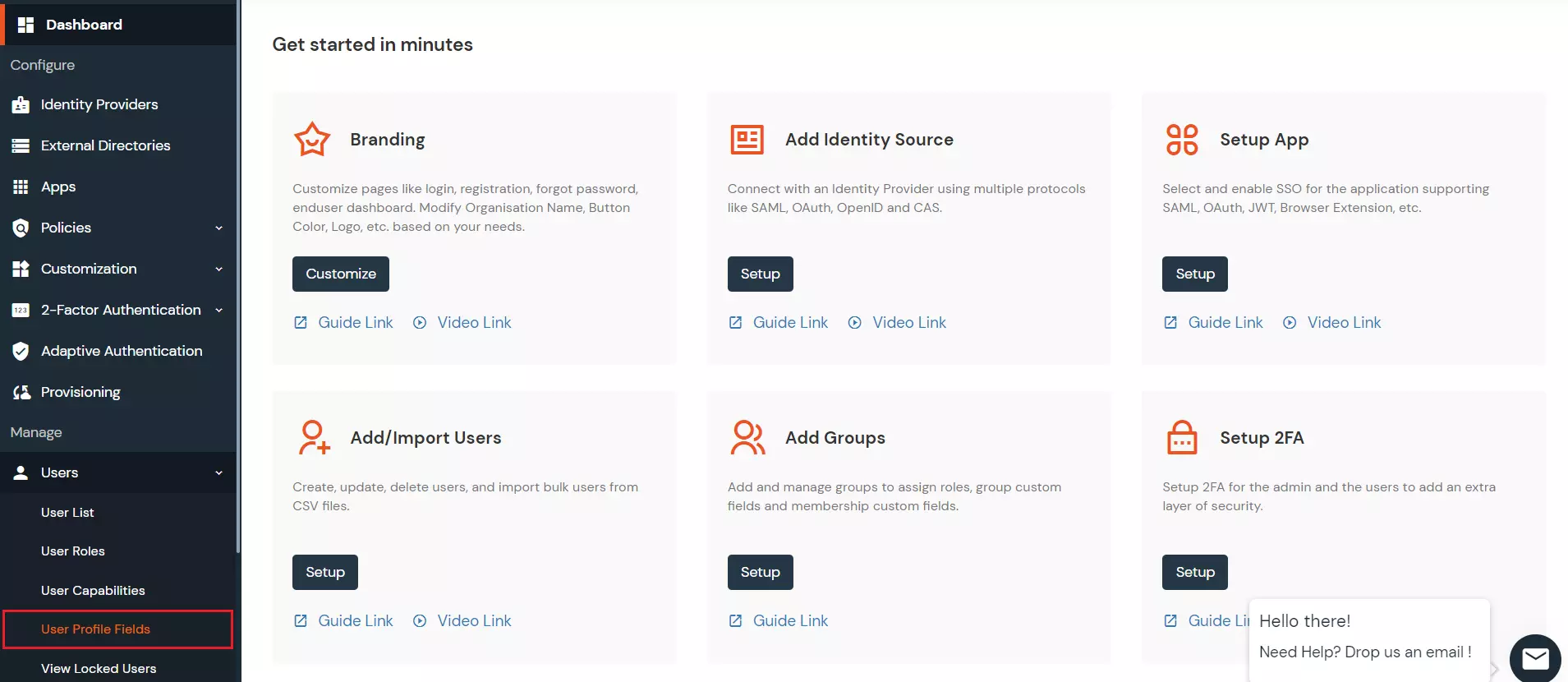
- Add User Profile Fields - Company and LastName. Make them as Required and click Save.
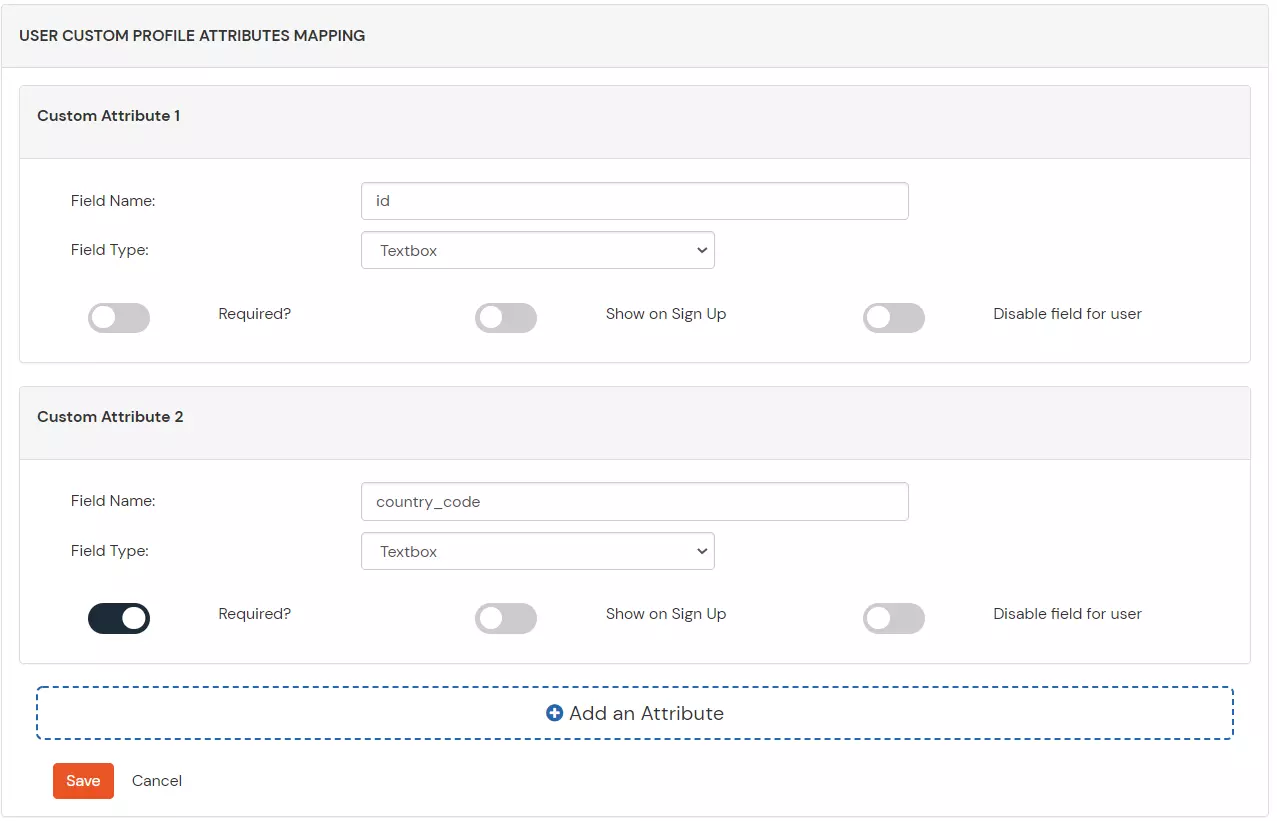
Provisioning & Deprovisioning Scenarios
miniOrange provides solutions for all scenarios of provisioning, which includes AD Integration, LDAP Integration and automated provisioning for all External Applications such as Office 365, Google Workspace, Workday, etc
Follow the step-by-step guide given below to setup Salesforce Provisioning
1. Setup Provisioning in Salesforce
- Login into miniOrange Admin Console.
- Click on Provisioning section and select Salesforce from the dropdown.
- Enter the Admin Username and click on Verify Credentials.

- For attributes mapping, click on + button and add the following attributes:
| Salesforce Attributes | miniOrange Attributes | |
|---|
| LastName | DEFAULT USER PROFILE ATTRIBUTE | Last Name |
| Company | CUSTOM USER PROFILE ATTRIBUTE | Custom Attribute 1 |

- Enable the provisioning features such as Import User, Create User, Edit User, Delete User and Password Sync which you want for users and click Save.
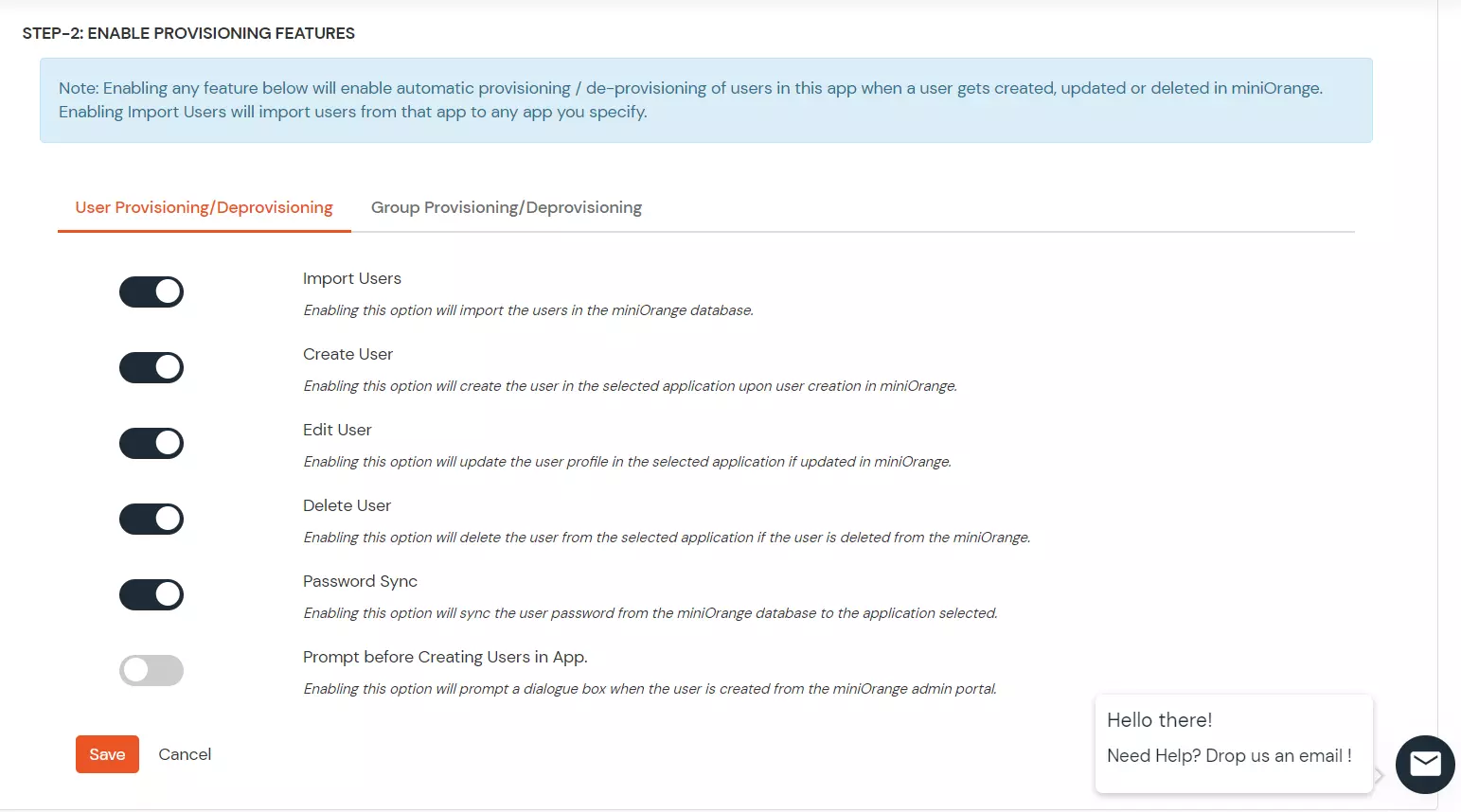
2. Import Users
- Go to Import Users Tab and select Salesforce from the dropdown. Click on Import to create users in miniOrange.

- Once the import is done. You can view these users in Users >> User List.
3. Create Users
- To create a user in miniOrange and sync the created user in Salesforce, Go to Users >> User List >> click on the Add User button.
- Fill out user basic information and click on Create User button.

- Now, you can find the user in Leads in Salesforce
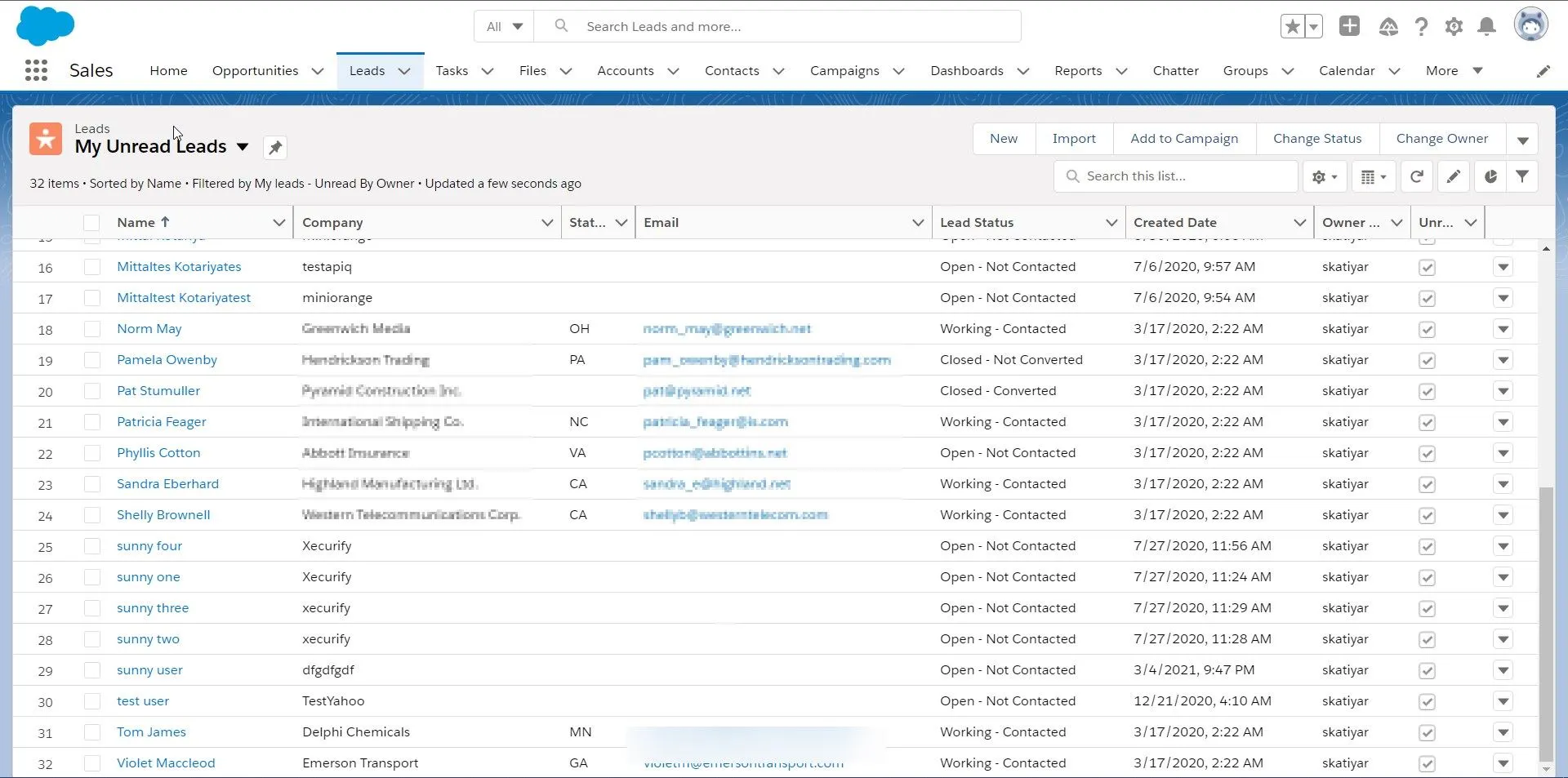
4. Edit Users
- To update user profile, Go to Users >> User List.
- Select a particular user and in Actions dropdown select Edit.
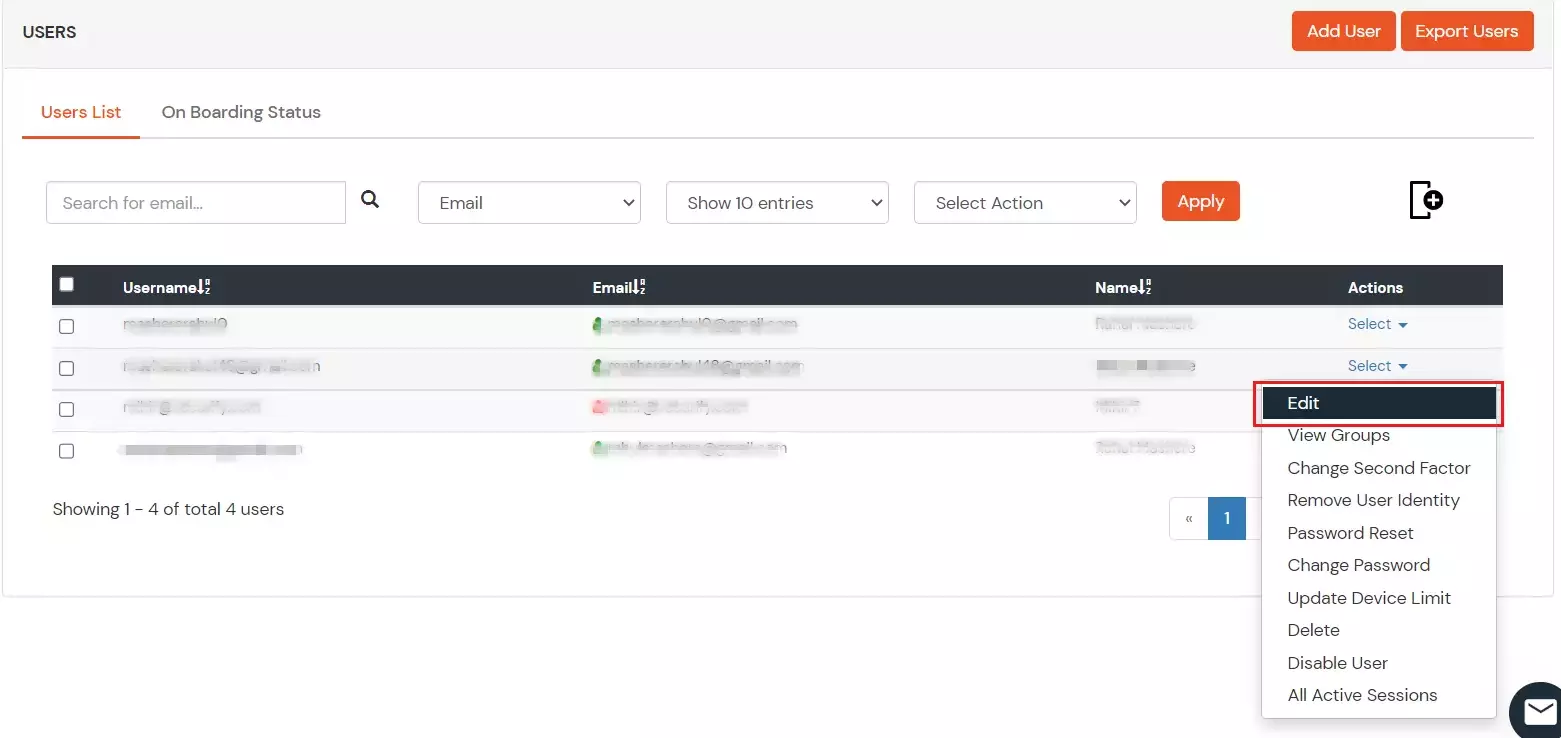
- Fill out user updated information and click on Save button.

5. Delete Users
- To delete user, Go to Users >> User List.
- Select a particular user and in Actions dropdown select Delete.
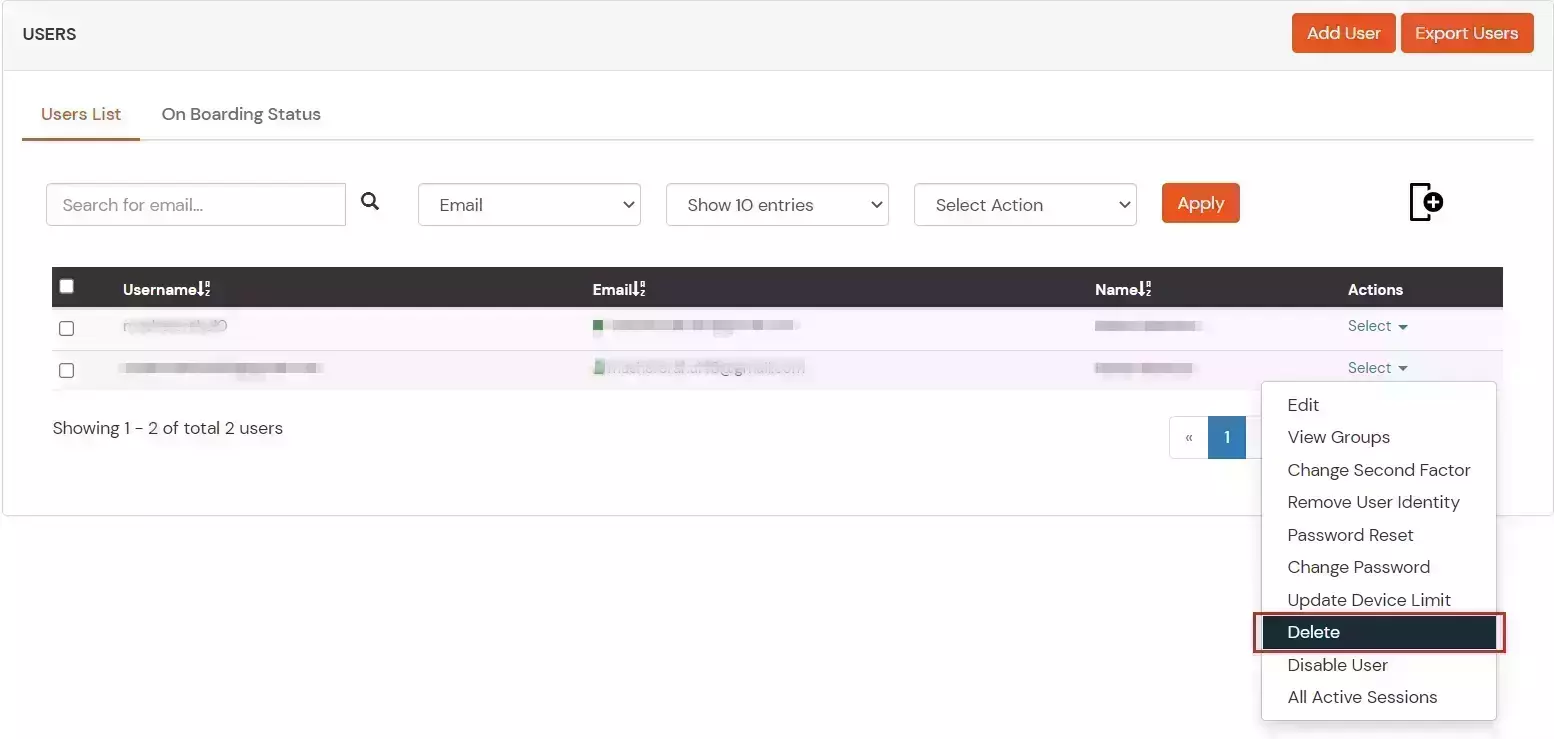
- A pop up will appear in which click on Yes button.

6. Password Sync
- To send password sync emails to the users with link to reset their Salesforce account password, Go to Users >> User List and click on Onboarding Status tab.
- Select users and in Select Action dropdown select Send Activation Mail with Password Reset Link.
- Click on Apply.
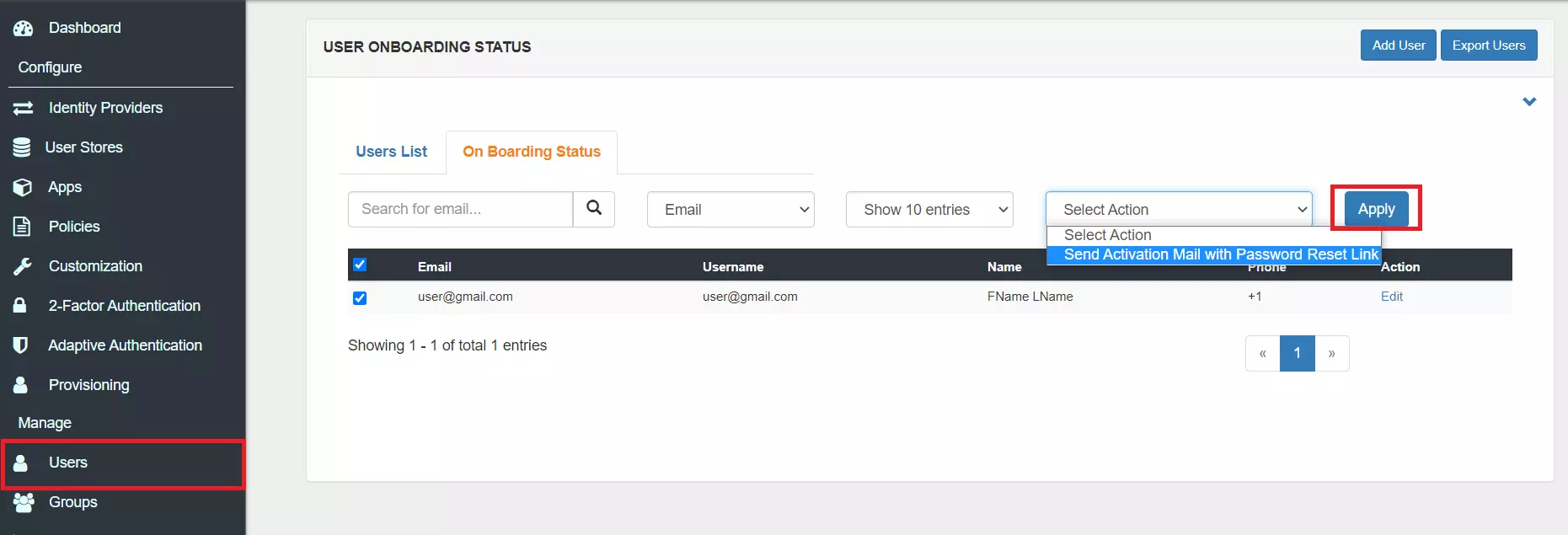
- Click on the activation link and it will direct to reset password.
- Once, the new password is set it will be synced.
View Provisioning Reports
How to access Provisioning Reports?
- Navigate to the Reports in the left-hand navigation pane and select Provisioning Report.
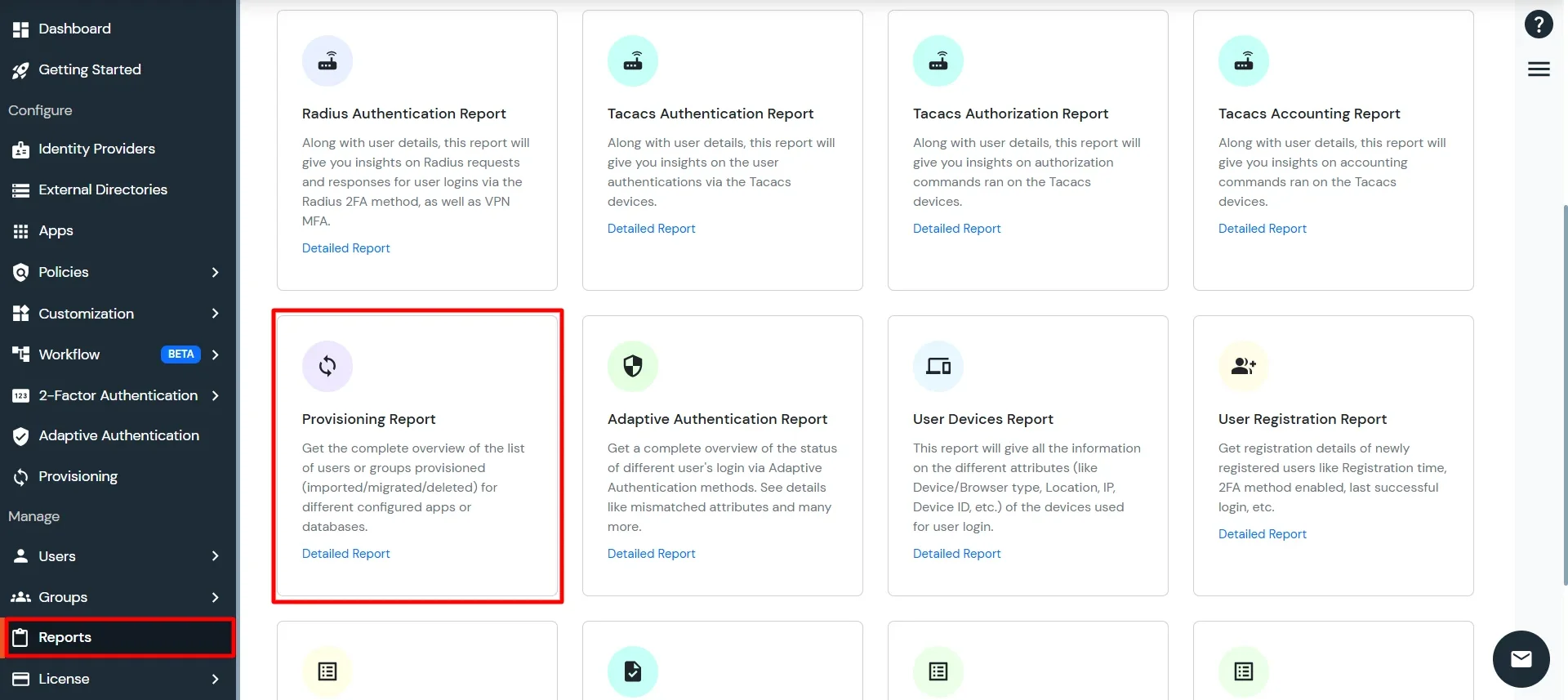
- Filter the reports by specifying Enduser Identifier and Application Name criteria. Additionally, choose the desired timespan for the reports. Once done, click on the Search.

- Alternatively, you can directly click on Search to retrieve all provisioning reports based on time without applying any specific filters.
External References
